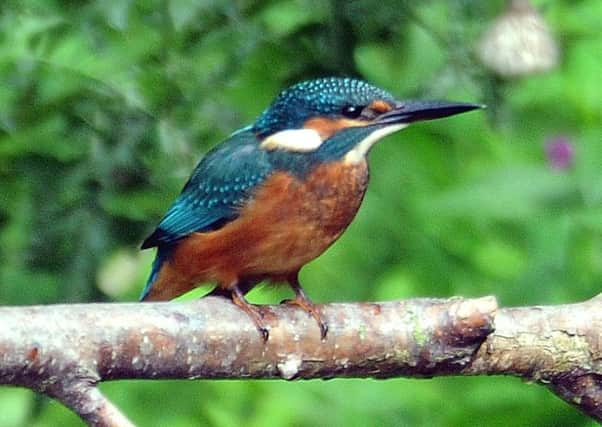Yorkshire’s Wonderful winter wildlife


The Yorkshire Wildlife Trust have devised 12 days of Christmas, which they can provide you with, and here is what you can see and do.
1 Visit rock pools
The rock pools at Flamborough are full of diverse marine life from edible crabs to bright red sea anemones, which are flowering plants. On Sundays, have a hot drink in the Trust’s Living Seas Centre, at South Landing Flamborough, whilst the children enjoy activities and displays.
2 Watch a kingfisher
Advertisement
Hide AdAdvertisement
Hide AdYorkshire Wildlife Trust Adel Dam Nature Reserve next to Golden Acre Park, to the north of Leeds, is a great spot to enjoy watching kingfishers that have bred on the reserve. The bright blue flash stands out against the wintery background of this tranquil nature reserve. Birds of prey also frequent the site with a resident sparrowhawk, buzzards and red kites.
3 Build a nest box
Early winter is a good time to put up nest boxes in advance of the breeding season. Birds may use them to roost in during cold periods too, with some species such as wrens roosting communally. Boxes can be purchased but you can make your own; download the ‘How to build a nest box’ factsheet http://www.ywt.org.uk/factsheets
4 Enjoy woodland walks
Try to spot fox, squirrel, deer and birds on a woodland walk. Keep your clothing rustle free and natural in colour to be as inconspicuous as possible. Yorkshire Wildlife Trust Moorlands and Askham Bog nature reserves make a nice escape from York’s hustle and bustle. If you want an adventure, try Grass Wood or Little Beck Wood near Whitby nature reserves.
5 Practice animal tracking
Practice your tracking skills after fresh snowfall, a hard frost or rainfall – mud makes a great track trap. Look out for the four imprints of a hare or the ‘slots’ of deer. If it is tricky to identify fox footprints from small dog, peek at the illustrated guide on the Trust’s website.
6 Spot tit species
Advertisement
Hide AdAdvertisement
Hide AdSix species can be found in Yorkshire gardens, parks and woodlands, though willow tits are scarcer these days. With the right food on offer, your garden can provide a welcome winter refuge for great, long-tailed, blue, coal and even marsh tit. An identification guide can be found on the Trust’s website. High energy seeds, nuts and fat-based products are perfect.
7 Search for swans
January is a time to go in search of whooper swans, flying from Iceland where they breed. These elegant swans feed in farmland and roost on wetlands. Their beaks are yellow with black, rather than orange like our resident mute swans. Places to see them include Yorkshire Wildlife Trust’s Wheldrake Ings, North Cave Wetlands and Pulfin Bog nature reserves.
8 Identify different trees
All too often, we walk past trees without really noticing them, so this winter why not take some time and learn to identify them by their shape, bark or new buds? Whilst tricky, many common species are easy to identify with a bit of practice. The remains of fallen leaves provide clues.
9 Study a hedgerow
See how many plants and animal species you can find in a hedgerow. Owls, kestrels and sparrowhawks hunt along hedgerows, and redwings and fieldfares often feed together here, sometimes in huge flocks. Holly and ivy berries are enjoyed by a number of birds.
10 Observe airborne predators
Advertisement
Hide AdAdvertisement
Hide AdWinter is a great time of year to watch birds of prey. In Yorkshire, you could see up to ten species in one day with planning and luck. Head to Yorkshire Wildlife Trust’s Staveley Nature Reserve for red kite and Spurn or Kilnsea nature reserves for merlin, peregrine and hen harrier.
11 Spot urban wildlife
While bats hibernate well into February, they may leave their roost on warmer nights to hunt. Look out for deer, foxes and badgers at dawn or dusk and watch birds coming in to roost before sunset. Hedgehog may wake up from their winter hibernation so if you put food and water out for them please remember to keep it topped up over winter.
12 See winter wildfowl
Huge flocks of duck, geese and wading birds gather around wetland and coastal areas at this time of year. Look out for sea ducks such as common scoter, often spotted in large rafts between Flamborough and Withernsea. Filey Brig is also a spot to see common eider.
For more details, visit www.ywt.org.uk. They can be contacted at [email protected] and Yorkshire Wildlife Trust, 1 St George’s Place, York, YO24 1GN.